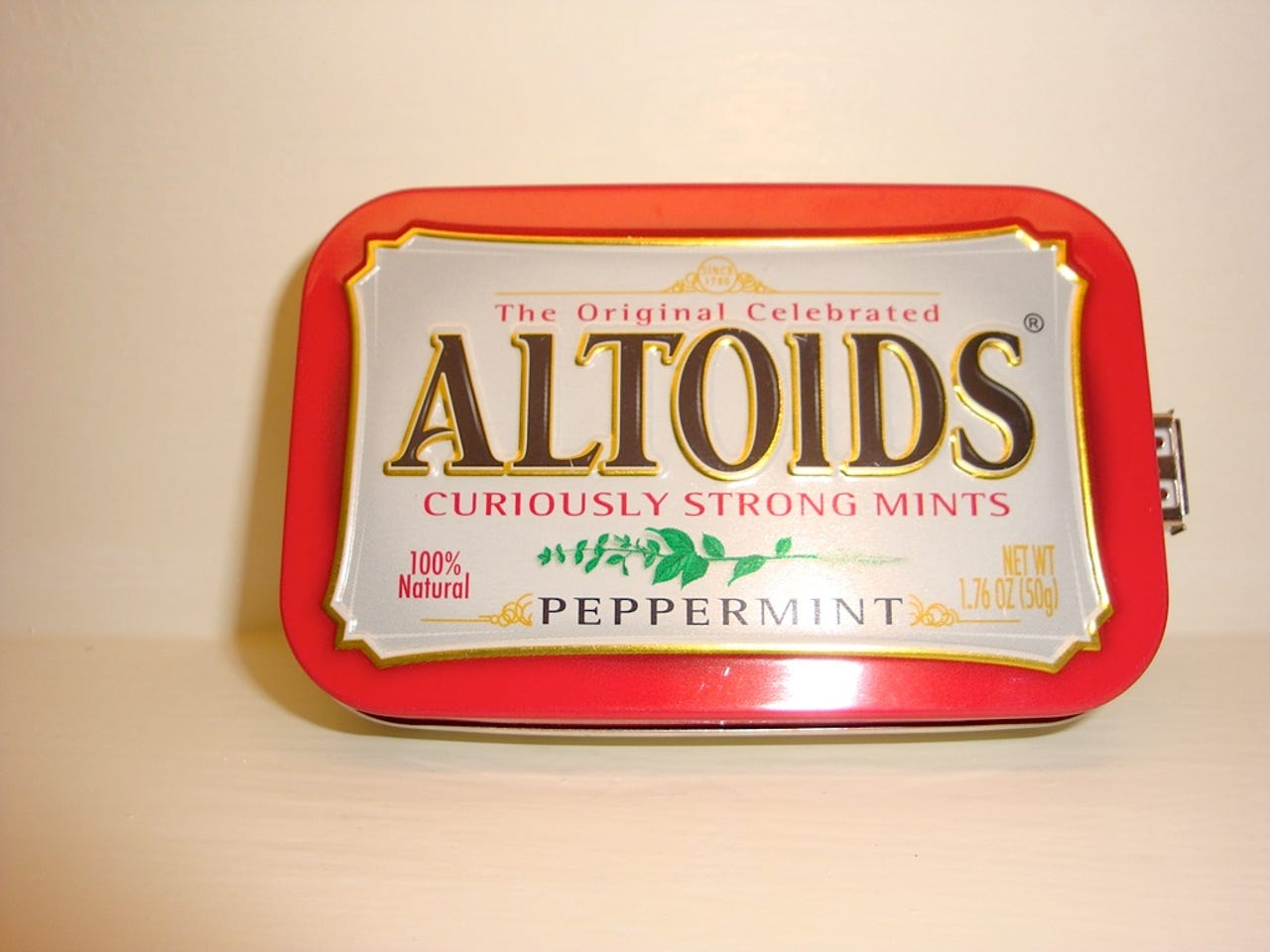Battery-powered USB chargers made with Altoids tins


Members of Let Them Tweet Cake, a female-only group in Louisville, KY that meets to discuss tech and geek-related stuff, were invited to LVL1 Hackerspace for a workshop on how to make MintiBoosts, battery-powered USB chargers made with Altoids tins. Check out this gallery to see images of yours truly trying to learn some geek skills and build my own MintiBoost!
It all starts with an Altoids tin.
Photo courtesy of Grace Simrall (@greendrv)
For more details about the project, read my Geekend post MintiBoost workshop for geek women at LVL1 Hackerspace.
Each workstation had a soldering iron, a magnifying glass with attached clamps, and a bright light.
Photo credit: Nicole Bremer Nash
This is the underside of the tiny motherboard. Each transistor has metal "legs" that are inserted in particular order and direction into holes on the motherboard. The soldering is done on this back side, and then the long wires are snipped short.
Photo credit: Nicole Bremer Nash
The front of the motherboard with four transistors mounted.
Photo credit: Nicole Bremer Nash
The magnifying glass isn't always helpful.
Photo credit: Nicole Bremer Nash
Some Tweeps are fast learners and took to soldering very quickly.
Photo credit: Nicole Bremer Nash
The board gets increasingly full, and by the end it is difficult to squeeze everything in.
Photo credit: Nicole Bremer Nash
Each completed MintiBoost was tested for performance. Can you guess which attendee didn't do hers right? It seems this geek has difficulty with dry solder sockets. Lesson: don't skimp on the solder.
Photo credit: Nicole Bremer Nash
I had to get some help with the soldering, and I never did get the hang of it.
Photo credit: Nicole Bremer Nash
When it was all done, it gets nested inside an Altoids tin.
Photo courtesy of Grace Simrall (@greendrv)
The battery pack covers part of the motherboard, and the motherboard attaches to a USB port that sits in a cut-out slot on the side of the tin. With the lid closed, the user just plugs any USB device in, and it charges right up.
I think a good hack on this project would be to use a small photovoltaic pack, like the ones used in making sun jars, and thereby eliminating the need for the batteries.
Photo courtesy of Grace Simrall (@greendrv)